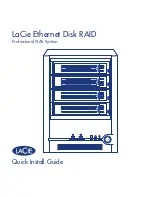
Appendix
C
. Glossary
193
the Internet Corporation for Assigned Names and Numbers
(ICANN). Domain names are a key element of URLs, which
identify a specific file at a web site, e.g.,
http://www.globespan.net/index.html. See also DNS.
download
To transfer data in the downstream direction, i.e., from the
Internet to the user.
DSL
Digital Subscriber Line
A technology that allows both digital data and analog voice
signals to travel over existing copper telephone lines.
Ethernet
The most commonly installed computer network technology,
usually using twisted pair wiring. Ethernet data rates are 10
Mbps and 100 Mbps. See also 10BASE-T, 100BASE-T, twisted
pair.
filtering
To screen out selected types of data, based on filtering rules.
Filtering can be applied in one direction (upstream or
downstream), or in both directions.
filtering rule
A rule that specifies what kinds of data the a routing device will
accept and/or reject. Filtering rules are defined to operate on an
interface (or multiple interfaces) and in a particular direction
(upstream, downstream, or both).
firewall
Any method of protecting a computer or LAN connected to the
Internet from intrusion or attack from the outside. Some firewall
protection can be provided by packet filtering and Network
Address Translation services.
FTP
File Transfer Protocol
A program used to transfer files between computers connected
to the Internet. Common uses include uploading new or updated
files to a web server, and downloading files from a web server.
hop
When you send data through the Internet, it is sent first from your
computer to a router, and then from one router to another until it
finally reaches a router that is directly connected to the recipient.
Each individual “leg” of the data’s journey is called a hop.
hop count
The number of hops that data has taken on its route to its
destination. Alternatively, the maximum number of hops that a
packet is allowed to take before being discarded (see also TTL).
host
A device (usually a computer) connected to a network.
HTTP
Hyper-Text Transfer Protocol
HTTP is the main protocol used to transfer data from web sites
so that it can be displayed by web browsers. See also web
browser, web site.
ICMP
Internet Control Message Protocol
An Internet protocol used to report errors and other network-
related information. The ping command makes use of ICMP.
IGMP
Internet Group Management Protocol
An Internet protocol that enables a computer to share information
about its membership in multicast groups with adjacent routers. A
multicast group of computers is one whose members have
designated as interested in receiving specific content from the
others. Multicasting to an IGMP group can be used to
Содержание Hurricane 9200/S
Страница 1: ...ADSL Ethernet Router User s Guide Revision 1 0 ...
Страница 9: ...Table of Contents 9 C Glossary 191 Index 199 ...
Страница 10: ......
Страница 13: ...13 Part 1 Getting Started ...
Страница 47: ...47 Part 2 Interfaces and Operating Modes ...
Страница 88: ......
Страница 89: ...89 Part 3 Routing and IP Related Features ...
Страница 102: ......
Страница 115: ...115 Part 4 Security Features ...
Страница 159: ...159 Part 5 Administrative Tasks and System Monitoring ...
Страница 173: ...Chapter 16 Monitoring System Status and Performing Diagnostics 173 Figure 79 DSL Interval Statistics Page ...
Страница 198: ......













































